Table of Contents
Flower Introduction
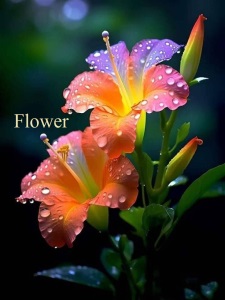
Flower
- A flower is the beauty and soft part of the plant or tree.
- They grow at the top of the stem of a plant or tree.
- A flower presents in diffrent colours with fragrance in plant or tree.
- A beautiful fragrance of flower gives out a sense of freshness and peace to the human mind as well as all kinds of creature on the earth.
- It is made up of four whorls in which inner two whorls are androecium and other two whorls are gynoecium.
- Androecium is the male parts of flower and gynoecium are the female parts of the flower.
- That’s why it is also called reproductive parts of a plant.
- Flowers are also a food source for other living organisms, such as bees, beetles, birds, and bats, etc.
- Flowers are also used as objects of romance, ritual, religion, and medicine.
Definition of Flower
- A flower is the coloured part of a plant or tree that fragile blossoms in which seeds or fruits grow.
- The main function of a flower is to make male and female gametes and to ensure that fertilisation will take place to make new seeds for the reproduction of plant.
Parts of Flower
- There are five main parts of flower which are named as:-
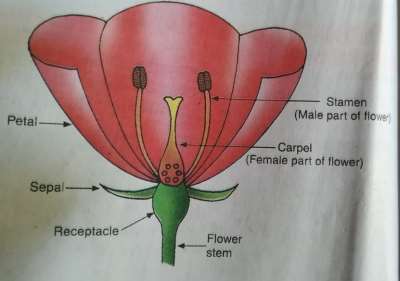
Image:- Parts of Flower
1. Receptacle
2. Sepals
3. Petals
4. Stamen
5. Carpel
1. Receptacle
- Receptacle is the base part of a flower to which all the parts of a flower are attached.
- This is also called as thalamus.
- Receptacle holds all the floral parts together.
- This keeps the flower in elevated position so as to attract the insects.
- In case of plants, it gives rise to edible part of the fruit.
2. Sepals
- Sepals are the green, leaf- like parts in the outermost circle of flower.
- All the sepals taken together are known as calyx.
- The main function of sepals is to protect the flower in its initial stages when it is in the form of a bud.
3. Petals
- Petals are the colourful parts of a flower.
- It lies inside the sepals.
- All the petals taken together are called ” corolla”.
- The petals are usually scented.
- The main function of petals is to attract insects and to protect the reproductive organs which are at the centre of the flower.
4. Stamen
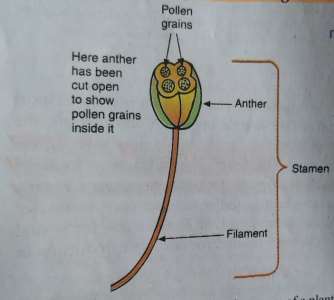
Image:- Stamen
- Stamen is the little stalks that has swollen tops just inside the ring of petals in flower.
- It is the plant’s male reproductive system.
- It produces pollen grains.
- It is made of two parts which is named as:-
i. A Filament
ii. An Anther
i. A Filament
- The stalk of stamen is called filament.
ii. An Anther
- An anther is a swollen structure which present on the tip of the filament.
- The anther of a stamen which makes the pollen grains and stores them.
- Pollen grains appear to be yellow and powder- like substance.
- Pollen grains contain the male sex cell or gamete.
5. Carpel

Image:- Carpel
- Carpel is a flask- shaped organ which present in the centre of the flower.
- Carpel is also known as pistil.
- It is the plant’s femal reproductive system.
- A carpel is made of three parts which are named as:-
i. Stigma
ii. Style
iii. Ovary
i. Stigma
- The top part of carpel is known as stigma.
- During pollination stigma received the pollen grains from the anther of stamen.
- Stigma is sticky so that pollen can stick to it.
ii. Style
- Style is the middle part of the carpel.
- Style is similar to a tube which connects stigma to the ovary.
iii. Ovary
- The swollen part at the bottom of a carpel is known as ovary.
- The ovary makes ovules and stores them.
- Ovules contain the female gametes of the plant.
- In the ovary, there are often many of ovules.
- Every ovule contains just a single female gamete of the plant.
- The female gamete of the plant which is available inside the ovule is called “ovum ” or ” egg“.
- That’s why the female gametes of a plant are made in the ovary of carpel.
Types of Flower
- There are basically fifty most popular types of flowers which are named as:-
1. Alstroemeria
2. Calla Lily
3. Gardenia
4. Daisy
5. Carnation
6. Gerbera Daisy
7. Orchid
8. Tulip
9. Peony
10. Dahlia
11. Marigold
12. Azalea
13. Aster
14. Buttercup
15. Chrysanthemum
16. Geranium
17. Delphinium
18. Lavender
19. Snapdragon
20. Zinnia
21. Iris Flower
22. Rose
23. Sunflower
24. Poppy
25. Periwinkle
26. Crocus
27. Black- eyed Susan
28. Daffodil
29. Petunia
30. Ranunculus
31. Violet
32. Dusty Miller
33. Hyacinth
34. Begonia
35. Camellia
36. Clematis
37. Coneflower
38. Evening Primrose
39. Forget Me Not
40. Forsythia
41. Freesia
42. Gladiolus
43. Hellebore
44. Hibiscus
45. Hydrangea
46. Jasmine
47. Lilac
48. Poinsettia
49. Queen Anne’s Lace
50. Rhododendron
1. Alstroemeria
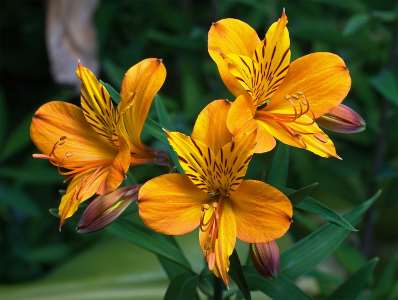
Image:- Alstroemeria Flower
- Alstroemeria is one of the most- loved and a genus of flowering plants in the family Alstroemeriaceae.
- This is also called as Peruvian lily or lily of the Incas.
- Their shape of leaves are vary and the blades have smooth edges.
- This genus plants emerge from a group of tubers.
- This flowers are solitary or borne in umbels and has six petals which is up to 5cm long.
- They are flecked, striped, and streaked with deeper colours, and they come in a variety of tints of red, purple, orange, green, and white.
2. Calla Lily
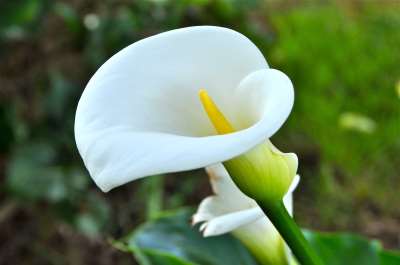
Image:- Calla Lily
- A calla lily is a species of flowering plant which is official bloom to represent a sixth wedding anniversary.
- It is often used to mark life’s rites of passage because of the flower’s uniqueness.
- Calla lily is an herbaceous or semi- evergreen plant which is perennial grown from rhizomes.
- This is also known as Zantedeschia aethiopica as well as arum lily.
- It grows to 0.6 – 1 m tall, with large clumps of broad, arrow shaped dark green leaves up to 45 cm.
- It comes in colors of white, yellow, orange, pink, red, purple, green or black.
- A calla lilies are highly dangerous to pets and humans if there any parts of the pant is ingested.
- It’s sap may cause skin or eye irritation.
3. Gardenia
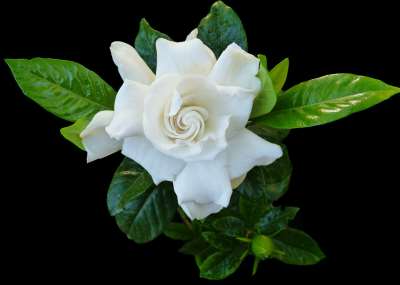
Image:- Gardenia
- Gardenias are glossy evergreen shrubs and small tree which are growing to 1- 15 metres tall.
- They are commonly called cape jasmine.
- Gardenias flowers are solitary or in small clusters, white or light yellow, with a barrel shaped- based corolla.
- It might reduces insulin resistance and help prevent glucose intolerance.
- It might also reduces swelling, lower blood fats and cholesterol, protect the liver and help treat viral infections.
- Gardenia have unique scent which are more feminine than jasmine, creamier than ylang and lighter than tuberose.
- The gardenia flower is capable of changing fragrances throught the day.
4. Daisy
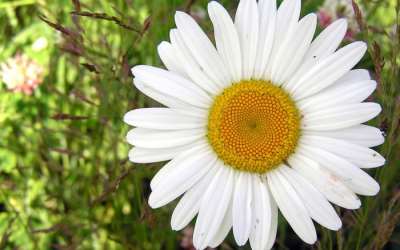
Image:- Daisy
- A daisy is a types of flowers with flat petals which is surround a round center. This round center presents in yellow or black florets.
- Its belong to the aster family.
- Its believed that their named is taken from old english phrase ” daes eage,” or ” day’s eye ” because of the way the flower blossoms at the first sign of dawn.
- There scientific named is “Bellis perennis”.
- This is a very beautiful and whitish flower.
- It’s a great source of vitamin C and other medicinal ingredients.
- Daisy symbolizes Love, childbirth, Innocence, motherhood and rebirth.
- It is a two – in – one flower- outer petals make one flower and small inner another.
- It is found in different size and in colors like Pink, Green, Yellow, White etc.
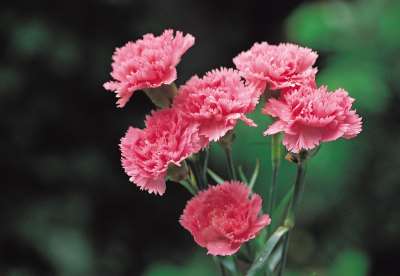
- The carnation is a types of a flowering plant which is prized for its beautiful blooms.
- Carnation is also known as grenadine, clove- gilly flowers, divine flowers, clove pinks and gilly flowers.
- Its scientific named is “Dianthus caryophyllaceae“.
- This scientific named is taken from the two Greek words” Dios” which refer to the God Zeus and “Anthos” which translates to flower. Thats why it is also known as ” Flower of God” or ” God’s Flower“.
- The carnations have a soft, spicy, balsamic scent that is devoid of cloves.
- Carnations have voluminous and bouffant like shape which are truly adept at adding mass to a bouquet. This makes them ideal to pair with flowers which miss the same natural “bounciness” and volume.
- It is used for treating muscle spasms and further develop heart wellbeing.
- It is also useful for treating the issue of hair loss and sore muscles.
- Carnation tea is proved to be very effective against depression that can lift the mind-set of people instantly.
- Its tea is also used as a treatment for diarrhea.
6. Gerbera Daisy
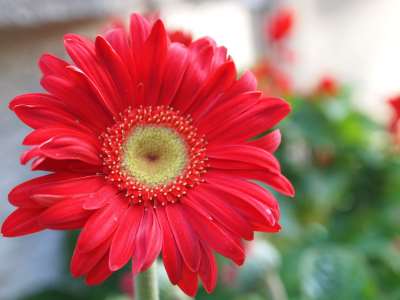
Image:- Gerbera Daisy
- Gerbera daisy are bright, colorful flowers that is commonly planted in gardens as bedding plants.
- Gerbera daisy are the members of the aster family and they are similar to sunflowers and marigolds.
- Their scientific named is “Gerbera“.
- It is also written as Gerbera jamesonii. Its plants thrive in a position with full sun sandy soil.
- Gerbera daisy comes in many vibrant colors including red, orange, yellow, pink, white and cream with their alluring fragrance.
- The gerbera flower is a symbol of purity, joy, and devoted love.
- Gerberas might be the perfect flower for you, if you suffer from hay fever.
- It is generally used as a decorative cut flower for bouquets but are also in flower beds.
7. Orchid
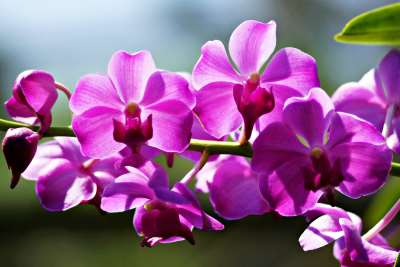
Image:- Orchid
- Orchid is a diverse and widespread group of flowering plants with blooms which are often colourful and fragrant.
- It’s belong to the Orchidaceae family.
- It has three petals, three sepals, and an ovary with three chambers.
- It’s two of the petals and three sepals are frequently similar to one another but one petal is usually highly modified to produce a ‘lip‘ or labellum.
- The scientific name of orchid is Orchidaceae.
- Orchid has a great source of vitamin A and antioxidants.
- It is used for treating skin problems like wrinkles, blemishes and more.
- Orchid is found in a multiple colors like red, pink, white, green, orange, blue, yellow and purple.
8. Tulip
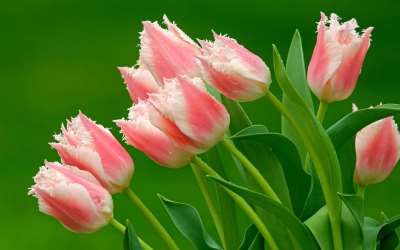
Image:- Tulip
- Tulips are one of the most beautiful bright colored, bell-shaped flower on a stem that grows from a bulb, also a flower itself.
- It is a member of a lily family and they usually bloom in spring.
- The word tulip has been derived from a Persian word called turban.
- It is found in a multiple color like red, pink, yellow or white.
- Tulip is the national flower of Turkey as well as Afghanistan.
- The scientific named of tulip flower is Tulipa.
- The Tulip flowers are shaped like a cup and it has three petals, sepals, and stems.
- The meaning of tulip is generally perfect and deep love.
- Its petals are edible and can be used in the place of onions in many recipes or even to make wine.
- Tulip flowers are known to be a great poultice for insect bites, honey bee stings, burns and rashes on the skin as it gave quick relief with a soothing effect.
9. Peony
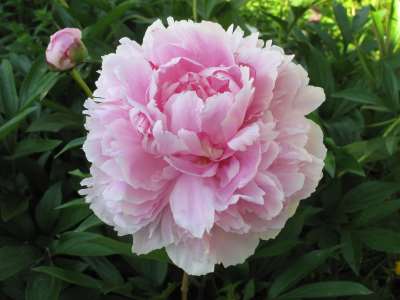
Image:- Peony Flower
- Peony is a large and layered flowers with sweet fragrance.
- It can live for over 100 years.
- The scientific named of Peony flower is Paeonia.
- They are only genus in the family Paeoniaceae which are native to Asia, Europe and Western North America.
- Peony produces large single and double flowers of white, pink, rose and deep crimson colors in late spring and early summer.
- Peony mostly grow in a sunny location with well- drained soil.
- It is used for the purpose of gout, osteoarthritis, fever, respiratory tract illnesses and cough.
- Peony smell like sweet and rosy to citrusy and spicy.
- It comes in a variety of colors, but red, pink, white and yellow are most popular in the world.
10. Dahlia
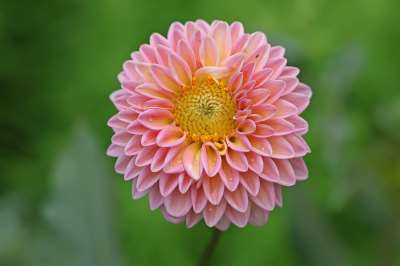
Image:- Dahlia Flower
- Dahlia is a beautiful shining star and attractive flower with simple leaves that are segmented and toothed or cut.
- They are planted in full sun and fertile, well-drained soil.
- It is a member of the Asteraceae famil of dicotyledonous plants.
- The scientific named of Dahlia flower is Dahlia.
- The birthplace of today’s dahlias are belongs to the mountain regions of Mexico and Guatemala.
- It may be respects that dahlia culture is similar to “tomato culture“. They are easy plants to grow and yield beautiful blooms from mid-summer through fall.
- Dahlia is found in peach, red, lavender, white, yellow, orange, pink and bi-color. Their shapes change from tiny pom to gigantic, corsage-worthy blooms.
- Dahlia are mostly fragrance-free.
11. Marigold
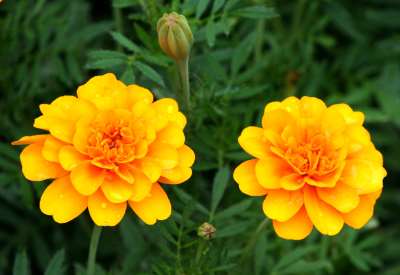
Image:- Marigold
- Marigolds are ultimate deer-resistant flowering plants that is found in red, orange, yellow and maroon color.
- The scientific named of Marigold flower is Tagetes.
- Marigold is also known as “Gendha“.
- Specially, it can be found anywhere in India.
- They are found in round shape that are many petals inside it.
- When the Marigold flower is ripe than the leaves are planted in the soil to prepare a marigold plant.
- Marigold represent the sun, symbolizing brightness and positive energy that’s why they are very popular in Hindu weddings.
- Marigolds are also associated with Lord Vishnu and Goddess Lakshmi, who are viewed as an ideal couple in Hindu Mythology.
- It is used for medicinal purpose such as skin conditions of all kinds, including contusions, bruises and varicose veins.
12. Azalea
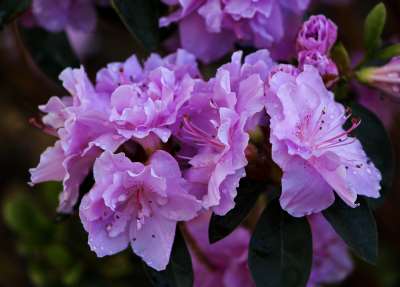
Image:- Azalea Flower
- Azalea is a funnel- shaped flowers that are two-lipped with often fragrant.
- The scientific named of Azalea is ” Rhododendron” .
- Azalea has delightfully scented with a sweet and spicy clove fragrance reminiscent of cottage pinks and carnations.
- These attract butterflies and hummingbirds with their blooms in multiple seasons.
- It is said that Azalea flowers are an ideal gift for somebody who aspires to greatness.
- Azalea found in shades of yellow, pink, organe, red and white in color.
13. Aster
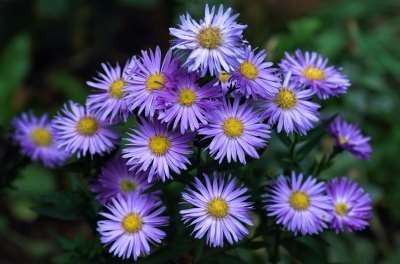
Image:- Aster Flower
- Actually, aster is a member of the sunflower family.
- It has round yellow center which are made up of a network of extremely small mini flowers called flowerets.
- Asters creat large clusters of flowers in white, purple, lavender, pink and red.
- Their plants tolerate poor soil and dryness but bloom poorly in dry soil.
- The scientific named of Aster is ” Aster “.
- It gives off a balsam like scent when crushed.
- Aster is a name comes from Greek word for ” star ” which is ” asteri“.
- It is commonly used added to tea blends, eaten fresh in salads or used as a garnish.
- The Aster of New England imparts medicial properties of immense value. Their stems and roots are used as poultices in relieving pain and healing wounds.
- Althought root alone is helpful in attenuating Diarrhea and fever.
14. Buttercup
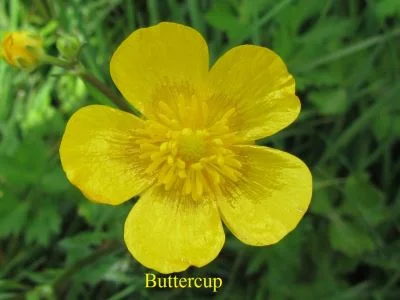
Image:- Buttercup Flower
- Buttercup is a small shiny yellow wild flower which look like cups.
- It is basically five petaled flowers.
- It called buttercup because the beginning of the name seems to come from a belief that it gave butter its golden hue.
- Buttercup is a kind of herbaceous plant that belongs to the Ranunculaceae family.
- The scientific named of Buttercup is”Ranunculus“.
- All parts of a buttercup are poisonous for cattle and humans.
- It grows upto 14 to 16 inches in height.
- A few types of buttercups have orange, red or white blossoms.
- Buttercups have shiny blossoms thanks to extraordinary layer of intelligent cells that are situated underneath the shallow cells of the petals.
- Buttercups normally blossom from April to May. A few species bloom during the summer.
- Buttercup fruit is called achene.
- It belongs to the group of dry and little fruits that contain just a single seed.
- Buttercup is utilized for joint inflammation, nerve pain, blisters, chronic, skin issues, and bronchitis.
15. Chrysanthemum
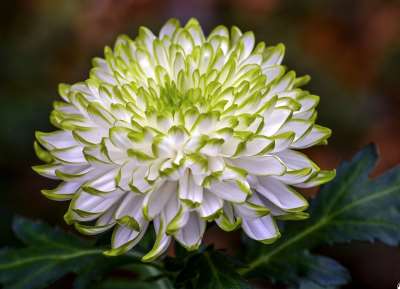
Image:- Chrysanthemum
- Chrysanthemums is are sun-loving plants which is brightly coloured and shaped like a ball.
- It called mums or chrysanths sometimes. Thses flowering plants are related to the genus Chrysanthemum in the family Asteraceae.
- Chrysanthemum flower name is taken from the Greek words chrysos and anthemon.
- The scientific named of Chrysanthemum is “Chrysanthemum“.
- It was first cultivated in the country China as a flowering herb and it is described in writings as early as 15th century B.C.
- Chrysanthemums are available in different shapes and sizes and the flowers vary between species.
- Its stem can reach 5 to 15 centimeters in height.
- There flower can have 1 to 25 centimeters in diameter.
- Chrysanthemum is used in the field to treat chest pain, fever, cold, dizziness, headache, high blood pressure, type 2 diabetes, and swelling.
- The chrysanthemum became related with death as opposed to life in European cultures because of its common use as gravesite decoration.
- Chrysanthemum flowers found in a range of colors in shades of white, yellow, orange, lavender, purple or red as well as bicolor flowers.
16. Geranium
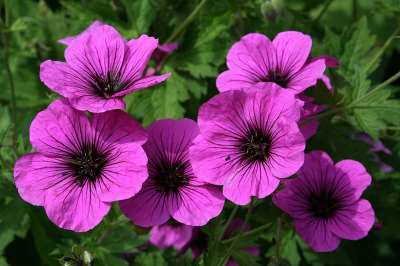
Image:- Geranium Flower
- Geranium is a typically five-petaled and white to purple flower.
- Their leaves are palmate divided into narrow pointed segments.
- They are found in coloured white, pink, purple or blue, often with distinctive veining.
- It will grow in any soil as long as it isn’t waterlogged.
- The scientific named of Geranium is “Geranium“.
- The common name of Geranium is “Cranesbills”.
- Geranium are found throughout the temperate regions of the world and the mountains of the jungles, yet generally in the eastern part of the Mediterranean region.
- Rugmini is the Hindi name of Geranium.
- Geraniums are known for their best aromatic and green foliage.
- The fragrance of Geraniums are varies from plant to plant.
- Geranium smell like citrus and fruity accents with a hint of spice and a rose when we smash a geranium leaf between our fingers.
- Although geranium is frequently confused with ‘the other’ rose but with a less powdery and more lemony, herbaceous fragrance, with a soft but potent warm green scent.
- Geranium oil is widely used in the field of an ingredient in perfumes and cosmetics.
17. Delphinium
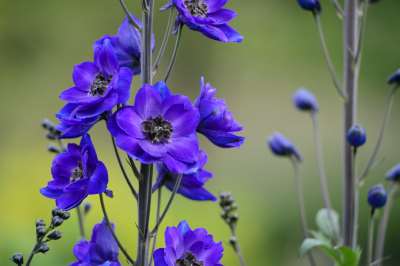
Image:- Delphinium
- A Delphinium is any of a large genus of the buttercup family that bears tall spikes of blue flowers.
- Its common named is larkspur.
- The genus name Delphinium derives from the Ancient Greek word “Delphinion” which means “dolphin”.
- Their leaves are deeply lobed with three to seven toothed that sharp curves in a palmate shape.
- The flowers of most species have five spreading sepals and four petals for e.g. Delphinium nuttallianum.
- The scientific named of Delphinium is “Delphinium”.
- Delphinium grows in moist but well-drained soil in full sun.
- People use the flower to make medicine to treat intestinal worms, fluid retention, poor appetite, and trouble sleeping (insomnia).
- Delphiniums bloom in a wide array of colors that are true blues, purple, lavender, pink, scarlet, white, and rarely yellow.
- It has a strong musky smell.
18. Lavender
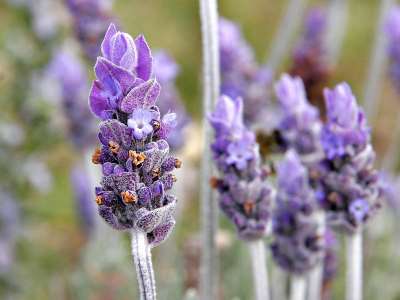
Image:- Lavender
- Lavender is a plant that has grey-green leaves like needles small and pale purple flowers.
- Their leaves are covered in fine hairs or indumentum in the most species that normally contain essential oils.
- Lavender flowers may be blue, violet or lilac in the wild species, occasionally blackish purple or yellowish.
- For the best growth lavender needs full sun and well-drained soil.
- The name lavender derives from the Latin verb “lavare,” which means “to wash.”
- The scientific named of lavender is “Lavandula“.
- The scent of lavender is delicate, sweet, and simultaneously flowery, herbal, and evergreen.
- Additionally, it contains subtle, powdery or smoky undertones.
- A few lavenders smell more like medicinal camphor and are more reminiscent of rosemary’s balsamic resin.
- People frequently use lavender for anxiety, stress, sleeplessness, depression, dementia, pain and many other ailments.
- However many of these claims are not well-supported by science.
19. Snapdragon
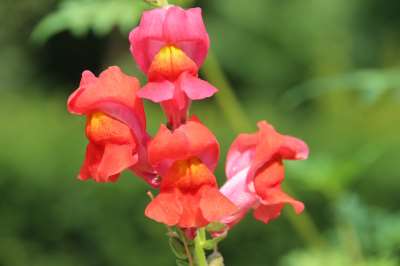
Image:- Snapdragon Flower
- A snapdragon is a plant bearing spikes of brightly coloured two-lobed flowers that can open and shut like a mouth.
- A snapdragon is also known as Antirrhinum, dog flowers and dragon flowers because of the flowers’ imagined similarity to a dragon’s face that opens and closes its mouth when lateral pressure is applied.
- The scientific named of snapdragon is “Antirrhinum”.
- Their leaves are usually lance- shaped.
- Snapdragon flowers are tubular and bilaterally symmetrical.
- There are many different colours of Snapdragons such as white, yellow, orange, red, purple, lavender, burgundy and pink.
- Snapdragon are used to create edible oils in Russia.
- Snapdragons flower grow best in rich, well-draining soil in a sunny location.
- Snapdragon flower and leaves have been used as traditional herbal medicine for treating several symptoms and diseases such as watery eyes, gum scurvy, ulcers, liver disorder, hemorrhoids and tumors.
- All snapdragons are ethylene sensitive and most florist snapdragons do not give off much scent.
20. Zinnia
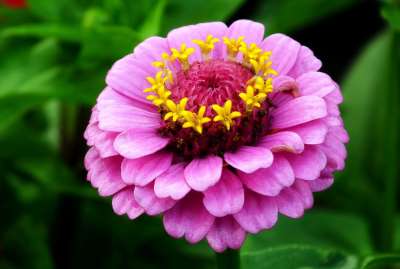
Image:- Zinnia Flower
- Zinnia is an an American plant of the daisy family that is cultivated for its bright showy flower heads with long-lasting ray flowers.
- Full sun is ideal for zinnia growth and flowering.
- Even in warmer climates with afternoon shadow, they can flower there, but they may be more prone to disease and produce fewer flowers.
- It needs Organically rich, fertile soils with good drainage are ideal for growing zinnias.
- Zinnias best bloom from April to November.
- The scientific named of Zinnia is “Zinnia“.
- Zinnia appears in a range from a single row of petals to a dome shape.
- Zinnias have no fragrance but they do grow in a huge range of colors may be yellow, orange, red, purple, white, chartreuse or lilac.
- Zinnia species are utilised in folk medicine for the treatment of malaria and stomach pain as well are used as hepatoprotective, antiparasitic, antifungal and antibacterial agents.
21. Iris
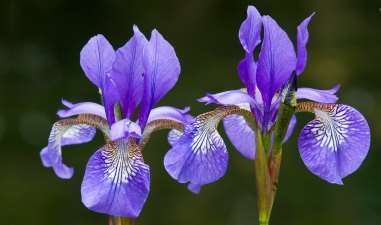
Image:- Iris Flower
- Iris flower is beautiful bloom that possess three sepals, three petals, and three broad pollen-receptive stigma branches, under which the pollen-producing anthers are hidden.
- The word “iris” taken from the Greek word “rainbow” that is also the name for the Greek goddess of the rainbow.
- Iris inflorescences are in the shape of a fan and contain one or more symmetrical six-lobed flowers.
- They grow on a pedicel or peduncle.
- The scientific named of Iris is “Iris“.
- Iris required a full sun location in well-draining soil with an ideal pH of 6.8.
- Iris flower appears in shades of purple, orange, rose, black, white, blue, red, peach and yellow.
- Iris flowers have a buttery-soft, smooth and skin-like scent.
- Iris Orris root is used for blood-purifying, gland-stimulating, increasing kidney activity, stimulating appetite and digestion, and increasing bile flow.
- It is also utilised for headache, muscle and joint pain, migraine, toothache, constipation, bloating, diabetes, and skin diseases.
22. Rose
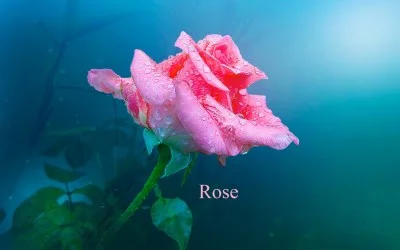
Image:- Rose
- Roses are the most beautiful flower of all because they emits beautiful positive feelings.
- Rose is also known as the king and queen of flowers.
- It belongs to the genus Rosa and family Rosaceae.
- The name of rose is derived from the Latin “rosa” which refers to the Rosa genus of woody perennial flowers.
- The scientific named of rose is “Rosa“.
- It is the oldest flowering plant that born in June.
- Rose has swirling petals, long stems, and oval leaflet extend to roses a mystic charm that is difficult to discover in any other flower.
- The beauty and fragrance of roses is a sight and experience to behold.
- The rose is viewed as a representation of love.
- Rose is the national flower of the United Kingdom, the United States and the Maldives.
- The most popular use for roses is as aesthetic plants developed for their blossoms in gardens and occasionally indoors.
- They have also been employed in the commercial production of cut flowers and perfumes.
- Some of them are employed as ornamental plants, as hedges, and for other practical reasons including game cover and slope stabilisation.
- Rose come in many different colors such as red, violets, pink, orange, blue and even black.
23. Sunflower
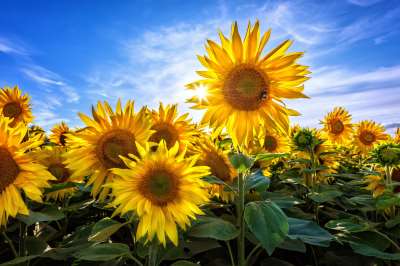
Image:- Sunflower
- A sunflower is a large yellow flowers with tall plant annual forb of the genus Helianthus.
- It is frequently cultivated for its edible oily seeds.
- The scientific named of sunflower is “Helianthus“.
- Helianthus is the binomial name that is derived from the Greek Helios ‘sun‘ and anthos ‘flower’, while the epithet annuus means ‘annual‘ in Latin.
- The 1st time sunflower plant was domesticated in the Americas.
- In the 16th century their seeds were brought to Europe from the Americas.
- Russia and Ukraine together generate more than half of the world’s seed output.
- Sunflower plant typically grows to a height of 3 metres and has an upright, rough-hairy stem (10 feet).
- Sunflower is made up of many tiny flowers.
- The flower head is actually made up of up to two thousand florets.
- These tiny flowers are contain so much nectar making them a great treat for bees as well.
- Their leaves are broad, rough, and typically alternating; the largest and most frequently heart-shaped ones are found near the bottom.
- Sunflowers were also ground into flour and their seeds were roasted and consumed.
- It should come as no surprise that sunflowers are viewed as being incredibly uplifting flowers.
- They are the ideal flowers to commemorate a happy event or to lift someone’s spirits through a trying period.
- Sunflowers not only resemble tiny suns, but their blooms also move with the sun as it crosses the sky.
- They can travel back to their original position at night thanks to their internal biological clocks, which enable them to track the sun as it moves from east to west during the day.
- They only do this, though, while they are young plants because it promotes healthy growth.
- Sunflower is available in many other colors that including shades of gold, rose, cream, pink, and even chocolate brown.
- Sunflower gives a subtle and faint smell that gives a natural, irresistible fragrance.
24. Poppy
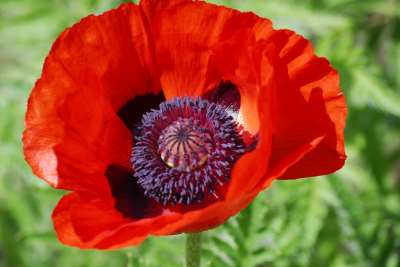
Image:- Poppy Flower
- A poppy is a bright red wild flower that has small black seeds.
- A poppy is a flowering plant belonging to the subfamily Papaveroideae of the family Papaveraceae.
- It has often grown for their colourful flowers.
- Herbaceous plants known as Poppies.
- The scientific named of poppy is “Papaver“.
- There flowers are up to 3–10 cm in diameter, normally with four white, mauve or red petals, sometimes with dark markings at the base.
- A poppy needs full sun and well- drained, fertile soil for their best growth.
- The standard poppy has five papery petals, but certain varieties known as “doubles” have significantly more.
- On large plants, the flowers can have a diameter of up to four inches and have petals that resemble a cup.
- The opium poppy’s petals fall off a few days after it blooms, leaving its seed capsule behind.
- The poppy has served as a constant reminder of the First World War.
- The blue poppy is the national flower of Bhutan.
- Poppy basically available in three colors such as Red, White, Purple and Black.
- Poppy used to relax smooth muscle tone, diarrhea, abdominal cramping, toothache, earache, sore throat and even for reducing the appearance of wrinkles and in lipstick.
- The opium poppy is the primary source of several drugs, such as morphine, codeine and heroin.
25. Periwinkle
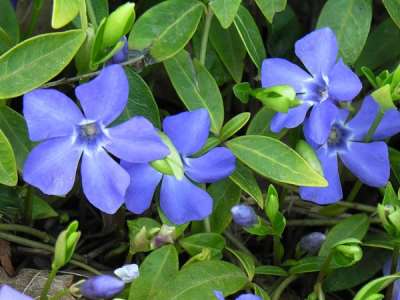
Image:- Periwinkle Flower
- A periwinkle is typically bluish flowers that has flat-petalled with glossy leaves.
- The color of periwinkle is blue with shades of purple and sits beyween the two in the color wheel.
- Its belong to the violet family.
- Their name is derived from the lesser periwinkle or myrtle herb that bears flowers of the same color.
- The scientific named of periwinkle is “Vinca“.
- The color periwinkle is also known as “lavender blue” and “light blue violet”.
- Its plant grow upto 6inches tall.
- Periwinkle is also likes to be in shade and a little bit of a sun.
- They do very well in moist soil and likes getting water regularly.
- Periwinkle got the name “Sadabahar” in Hindi.
- The color of periwinkle is most commonly observed in red-eyed, pink, blue and white.
- They don’t known for their scent.
- Periwinkle is used in the field of medicine for the treatment of leukemia, vaginal discharge, throat ailments, tonsillitis, diarrhea, chest pain, high blood pressure, sore throat, intestinal pain and swelling, toothache and water retention.
26. Crocus
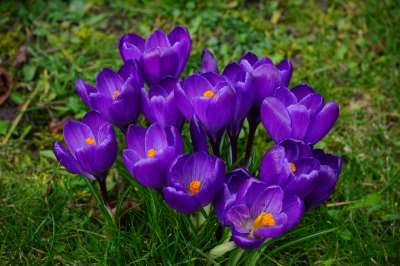
Image:- Crocus Flower
- Crocus is a small yellow, purple or white buds flower that has in the shape of inverted tear-drop formed by six petals in two whorls of three.
- Their outer whorl’s petals are slightly larger than the inner whorl’s.
- It is aslo known as Saffron.
- The dried stigma of the autumn- blooming plant Crocus sativus is used to make saffron.
- It is one of the most costly spices in the world and is treasured for use as a spice and dye.
- The primary country for saffron manufacturing is Iran.
- The scientific named of crocus is “Crocus“.
- They can withstand both cold weather and low temperatures.
- The majority of crocus cultivars require a bright, open location for planting.
- They’ll flourish in grass and turn into a stunning spring meadow.
- Some species, like Crocus gargaricus, may also grow in partial shade and require moist but well-drained soil.
- The crocus plant is useful as a spice and medicinal in addition to being a floral plant.
- Medicine is made from the flower, bulb, leaves, and seed.
- However, the entire plant is regarded as poisonous.
- Autumn crocus is used to treat gout, familial Mediterranean fever, and rheumatoid arthritis (RA) despite major safety concerns.
- Crocus is also used in traditional medicine for the treatment of many diseases including tumors.
- The majority of common crocus variants have little to no perfume, although a handful of the more desirable ones have.
27. Black- eyed Susan
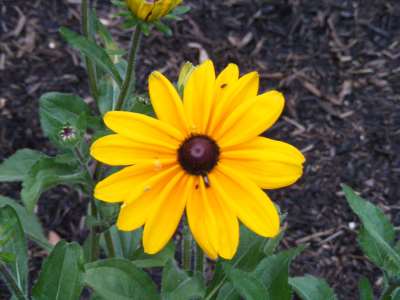
Image:- Black- eyed Susan
- Black- eyed susan is a flower with dark-brown central cone that is surrounded by rich, yellow, petal-like rays.
- Their leaves are long, lanceolate, and unpleasant to the touch.
- The black-eyed Susan gets its name because of its black center or eye.
- Black-eyed Susans have stalks more than 8 inches long, flowers with a breadth of 2 to 3 inches, and leaves that are at least 6 inches long.
- They can grow to be 1 to 3 feet tall.
- Black-eyed Susans should be planted in full sun in the spring or early fall.
- The scientific named of Black-eyed Susans is “Rudbeckia hirta“.
- They are mostly show in bright yellow, gold, or bronze color.
- Black-eyed Susans has a pleasant sweet smell which is similar to sweet grass.
- It is the national flower of Maryland.
- Black-eyed Susans roots are used by several Native American herbal treatments to cold, dropsy, and worms in children.
- The mixture of Black-eyed Susans roots are also used for injuries and snake bites as well as the fluid inside the roots has been used as earache drops.
28. Daffodil
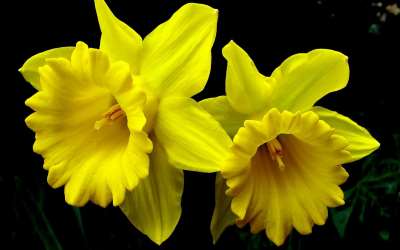
Image:- Daffodil Flower
- Daffodil is a tall yellow bell-shaped flower with a long stem that grows in the spring.
- The scientific named of Daffodil is “Narcissus“.
- Narcissus features striking flowers with six tepals that resemble petals and are topped by a corona in the form of a cup or trumpet.
- Daffodil is belong to Amaryllidaceae family.
- The color of Daffodil are generally white and yellow but also available in various combinations of pink and orange, with or without yellow, in intense and pastel shades.
- They are planted in October and its flowers bloom in late winter or early spring.
- The Daffodils mostly grow in the regions of North America, except in the hottest, wettest areas, such as South Florida.
- Daffodil is the national flower of “Wales“.
- Aside from the more popular daffodil, known as Nargis in India, wild daffodils are also grown in India.
- Daffodil smell like heady floral with sweet and green nuances.
- But some of daffodil will miss fragrance completely.
- Daffodils have been used regularly in folk and traditional medicine such as asthma, joint pain, and wound healing as well as being used for centuries in cancer treatments.
29. Petunia
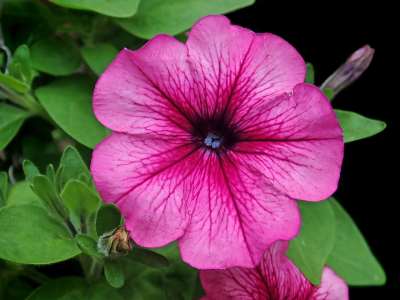
Image:- Petunia Flower
- Petunia is a South American plant that has purple, white or red funnel-shaped flowers with many ornamental varieties.
- Petunia needs full sunlight at least 5 or 6 hours every day to perform better bloom.
- Its belong to the family Solanaceae and subfamily Petunioideae.
- Petunia flower made up of five fused or partially fused petals and five green sepals.
- The scientific named of Petunia is “Petunia“.
- They grow better in flourish moist soil at low atmospheric humidity conditions.
- It releases smell like an aromatic, sweet-smelling fragrance in the evening to attract insect pollinators as well as hawk moths.
- They can be used as seasonal groundcover, colour masses, borders, containers, and hanging baskets.
- Asparagus beetles, leafhoppers, aphids, and tomato worms are all deterred by petunias, a useful plant for pest control.
- The flowers are funnel-shaped, consisting of five fused or partially fused petals and five green sepals.
30. Ranunculus
31. Violet
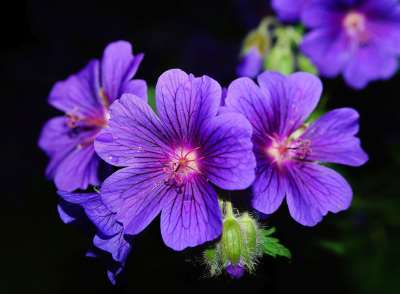
Image:- Violet Flower
- Violet flowers are made up of five oval petals blossom with heart shaped leaves.
- Violet flowers are a bit similar to iris.
- It belongs to the violet family.
- They are commonly known as sweet violet or dog violet.
- The scientific named of violet is “viola odorata“.
- It is a low growing perennial.
- Violet flower symbolizes the Virgin Mary’s humility in Christianity.
- Violet flower basically blossom in March to May.
- It needs full sun or partial shade conditions such as hedgerows or woods to grow best.
- They are important sources of nectar for woodland butterflies.
- It smell powdery and romantic.
- It contain beta-ionone that play a central role in the perfumer’s palette.
- It is used in the field of herbal therapy to treat conditions like headaches, depression, and sleeplessness.
- Sweet violets can be eaten and are frequently candied and used as cake decorations.
- They may also be used as a garnish or an addition to salads.
32. Dusty Miller
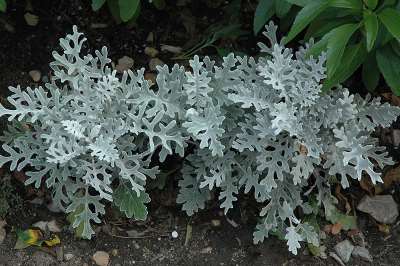
Image:- Dusty Miller Flower
- Dusty miller is an annual flower with whitish or greyish foliage and evergreen subshrub.
- It can grow upto 1.6- 3.3 ft. tall.
- Their stems are stiff and woody at the base.
- Dusty miller flowers are yellow in color with a central disc floret that is surrounded by a ring of 10–13 ray florets grow in dense capitula 12–15 millimetres in diameter.
- It rarely occurs inland and is usually found on cliffs and rocky coastal places.
- The scientific named of Dusty miller is “Jacobaea maritima“.
- It belongs to Asteraceae family.
- The common named of Dusty miller is silver ragwort.
- Dusty miller is an ideal for neat edgings or for breaking up dense clusters of flower colour.
- Its plant is heat and drought tolerant and do best in full sun.
- Dusty miller is used to treat “spots before the eyes” and “migraine headache”.
- It is also used to start menstrual periods in women.
33. Hyacinth
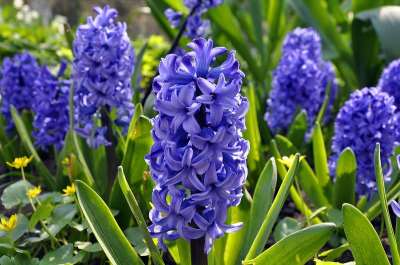
Image:- Hyacinth Flower
- Hyacinth is a compact spike of bell-shaped fragrant flowers with straplike leaves that belongs to bulbous plant of the lily family.
- Its name is derived from a Greek word which means the blue larkspur flower or the color purple.
- The scientific named of hyacinth is “Hyacinthus“.
- Hyacinth needs loose and loamy soil for their better growth.
- They don’t need excess water.
- Hyacinth is planted in full sun for their largest flowers and straightest stems.
- Their bulbs will also flower in half-day sun or light shade.
- Hyacinths have a strong fragrance that can be described as flower-green with vegetal aquatic accents, sweet, and spicy overtones.
- Lilac is a pleasant, delicate flower scent with sweet powdery balsamic overtones that is similar to lily of the valley.
- The colour of hyacinth varies between ‘mid-blue’, violet blue and bluish purple.
- The water hyacinth is a kind of aquatic plant that can be found in lakes, rivers, canals, ponds, ditches, and other freshwater ecosystems all over the world in temperate climates.
- Water hyacinth originated in Brazil and has now become a native plant in many places, including regions of Africa, Australia, India, and North America.
- The uses of Water hyacinth is to treat waste water from dairies, tanneries, sugar factories, pulp and paper industries, palm oil mills, distilleries, etc.
- A climbing plant that produces seeds is called a hyacinth bean. You can eat the seeds, units, leaves, blossoms, and roots.
- Their seeds are medicinal used orally to treat diarrhoea and stomach issues as well as to prevent pregnancy.
- Also, you can use it to maintain the radiance and health of your skin and hair.
34. Begonia
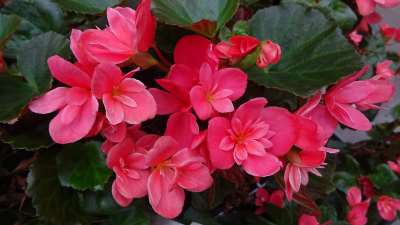
Image:- Begonia Flower
- Begonia is a bright waxy flowersthat flower has brightly coloured sepals but no petals.
- It is a herbaceous plant of warm climates.
- Their leaves are also colorful.
- Its scientific named is “Begonia“.
- Begonia mostly found in the color like Orange, Pink, Red, White and Yellow.
- Begonias are indigenous to tropical and subtropical locations.
- They are most common in sub-Saharan Africa, Asia, and Central and South America.
- Its plant is usually less than one foot tall and with loads of colorful flowers up to four inches across.
- Begonias are cultivated for their colourful leaves and fragrant flowers.
- They can be placed in window boxes, hanging baskets, and other containers as well as utilised as bedding plants.
- Their plants are both yearly and lasting begonia types in partial shade, with moist, well-drained soil high in organic substance.
35. Camellia
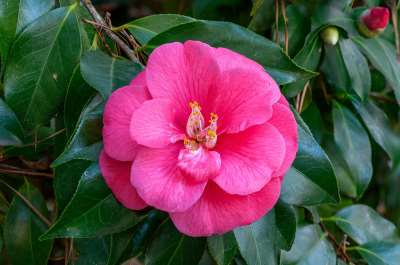
Image:- Camellia Flower
- Camellia is an evergreen East Asian shrub that is related to the tea plant.
36. Clematis
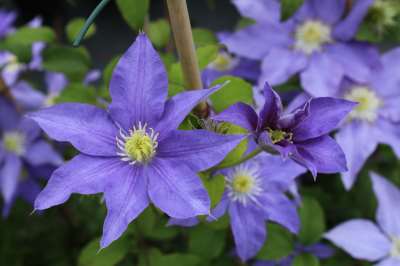
Image:- Clematis Flower
- Clematics flower is a large blossom with six or seven petals.
- Its belong to climbing plant of the buttercup family.
- The sizes of flower is upto 5-6″ across.
- They are cultivted in the colors range from white to wine red, lavender to deep purple and also in a few yellow ones.
- Clematis needs at least six hours of direct sunlight each day to blossom well.
- The soil must have a low pH, be loose, and be well-draining.
- Clematis are tolerant in a variety of soil types, but grow best in deep, fertile, moist but well-drained soil.
- The scientific named of Clematis is “Clematis”.
- Clamatics is used for headaches, joint pain, varivose veins, fluid retention, syphilis, gout, bone disorders and ongoing skin conditions.
- Sometimes people also apply clamatics directly to the skin for blisters and in a wet dressing to treat infected wounds and ulcers.
37. Coneflower
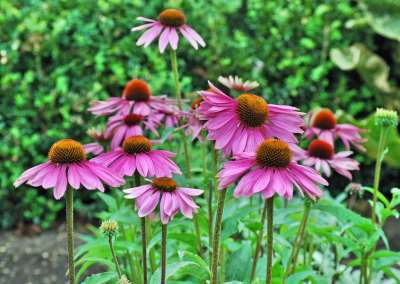
Image:- Coneflower
- Coneflower is a genus of herbaceous flowering plants in the daisy family.
- It is usually made up of a brownish-orange central cone with Narrow-leaf.
- Coneflower stems have small, rough hairs.
- Its flower bloom in early summer bascially in June to July.
- They can only be found in eastern and central North America.
- They grow best in moist to dry grasslands and open forested areas.
- It can be grown upto 2-4″ tall.
- Its scientific named is “Echinacea”.
- It is also known as purple coneflower.
- They are founded in the range of pink, red, orange, white and yellow.
- Although there are also double- and triple-flowered variations, the majority of kinds feature enormous single-petaled blooms.
- Coneflower is used in the field of an herbal medcine for the treatment of coughs, common cold, upper respiratory infections, bronchitis and inflammatory conditions.
- It has a light, sweet, honey-like fragrance that attracts butterflies, bees, hummingbirds and gardeners to the flowers.
38. Evening Primrose

Image:- Evening Primrose
- Evening primrose is a plant with pale yellow flowers that blossm in the evening and close during the day.
- Their flowers are hermaphrodite that grow on a long spike and are only present until midday the following day.
- Its plant native to North and South America that basically grows throught Europe and parts of Asia.
- They are also called by many common names like sundrop, weedy evening primrose, evening star, German rampion, King’s cure-all, hog weed and fever-plant.
- The scientific named of Evening Primrose is “Oenothera biennis”.
- Evening Primrose is a biennial plant with a two-year life cycle and a maximum height of 1.6 m.
- The leaves are lance-shaped, 8-18 cm long and 2-6 cm broad and they are formed in a compact rosette the first year then spirally on a stem the second.
- Its need to grow best in moist but well-drained soil.
- Evening Primrose flower having seeds that is used to produce oil.
- They have a strong and sweet fragrance.
- Evening primrose oil can be used to reduce pain severity and improve mobility.
- Also, it provides better relief from problems like morning stiffness than medicine alone.
39. Forget Me Not
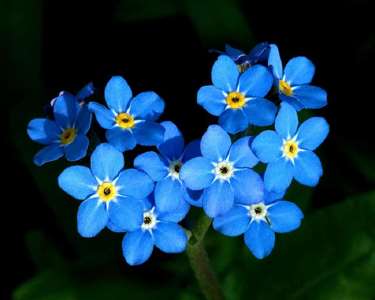
Image:- Forget Me Not
- Forget-me-not is a small and low growing plant with typically blue flowers that belongs to the borage family.
- The colors of forget-me-not flower is typically true blue or sky blue shade but it also comes in white, pale purple and pink colors.
- Its blossom in the shape of a small five-petalled, each with a yellow or white eye.
- The size of the forget-me-not flower is from 5- to 8-inches tall and with clumps from 8- to 10- inches in diameter.
- Its grow best in moist soil with good drainage in a sunny or shady location.
- It needs seed every year for its plantion.
- The cool weather and places with moderate summer temperatures are an ideal for it.
- The scientific named of forget-me-not is “Myosotis”.
- Forget-me-not represent true love and respect.
- The name of forget-me-not flower is called because of a German legend who died trying to get the flowers for his sweetheart and called out with his last breath, “Forget me not!”.
- They have almost no scent at all.
- It is used to reduce high blood pressure, soothe the nerves and promote restful sleep.
- It also gives a boost to hair and skin health.
40. Forsythia
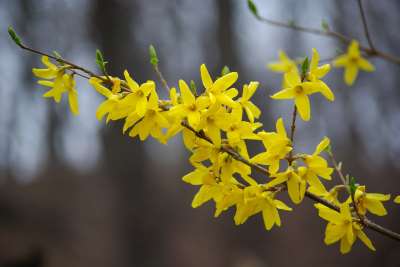
Image:- Forsythia Flower
- Forsythia is an ornamental Eurasian shrub that’s bright yellow flowers appear in early spring before the leaves.
- They have rough grey-brown bark and opposite leaves.
- It is also called by golden bell named and their scientific named is “Forsythia”.
- Its belong to the olive family.
- It grows upto a certain height of 8–10′ and spread of 10–12′ at maturity.
- It grow and blossom best in the full sun.
- Forsythias will grow in partial shade but won’t bloom as heavily.
- It might grow in a variety of soil types.
- They don’t perform well in wet, poorly drained sites.
- Forsythia smell like sweet honey almond.
- Forsythia is used to treat heart illness, HIV/AIDS, gonorrhoea, pain and swelling, tonsillitis, sore throat, fever, vomiting, and a severe skin rash with fever and vomiting brought on by a bacterium.
- Their leaves sometimes turn yellow, gold or purplish in the autumn but its fall color is usually poor.
- Sometimes the leaves turn yellow, gold, or purplish in the autumn but fall color is usually poor.
41. Freesia
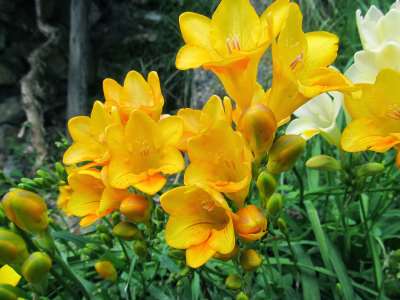
Image:- Freesia Flower
- Freesia is a small southern African plant with fragrant funnel-shaped flowers.
- It belongs to the Iridaceae family.
- Its flower made up of six petals thats plants grow from a conical corm 1.25cm dia. and sends up a tuft of thin leaves 10-30cm long.
- Freesia flowers appear within 10 to 12 weeks and remain in bloom for two to three weeks that’s depend upon the weather condition and care.
- They grow best in fertile and well- drained soil that’s an ideally neutral to alkaline.
- It also needs a warm, protected climate with a lot of sun.
- They are planted in June to September.
- Freesias have smell like juicy summer fruit as well as many people compare to fresh strawberries.
- The southern African Lobedu people use an infusion of the roots in warm water to alleviate headaches.
- They also use an ointment prepared from the ash of the leaves to cure burns.
42. Gladiolus
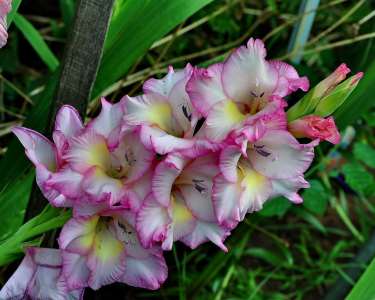
Image:- Gladiolus Flower
- Gladiolus are a bright coloured funnel- shaped flowers with sword- shaped leaves.
- Its available in colors like cream, yellow, orange, including shades of white, red, pink, lavender, purple and green.
- It is an old world plant that’s belong to the iris family.
- Their another named is “glads” and scientific named is “Gladiolus”.
- Gladiolus are local to South Africa where they grow best on a sunny locations in sandy loam soil with good water drainage.
- They bloom from July until frost.
- Gladiolus are smell like clove, almond, carnation, or honeysuckle.
- It is used in the medicinal field.
- Their plant’s corms are used as a bandage and to extract thorns or splinters.
43. Hellebore
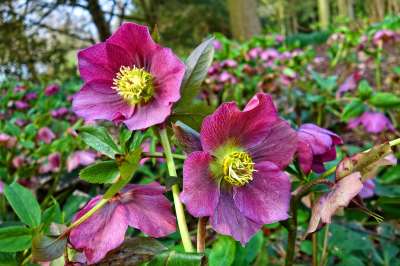
Image:- Hellebore Flower
- Hellebore is a poisonous winter-flowering Eurasian plant of the buttercup family.
- It has coarse divided leaves and large white, green or purplish flower.
- It’s born in the month of February.
- Hellebores are typically woodland edge plants that’s range in size from about 9-8 inches tall and 12-24 inches wide.
- They grow in thrive in rich, moisture-retentive soil but suffer in soggy and rainy environments.
- Most will endure full sun to practically full shade.
- They are commonly called by the name “Lenten rose” and it’s scientific named is “Helleborus”.
- Hellebore smells if you crushing their leaves that can produce an odour often described as “beefy”.
- Black hellebore is used by the people for conditions like cancer, worms, nausea, irregular periods as well as many others.
- But there is no scientific proof to support the usage of black hellebore.
- It’s dangerous to use black hellebore as well.
44. Hibiscus
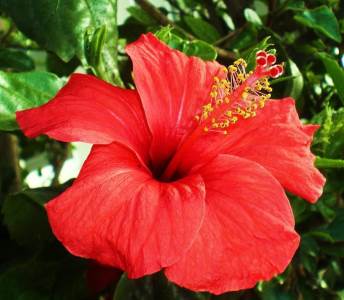
Image:- Hibiscus
- Hibiscus is a large trumpet-shaped bright colored flowers that’s belong to a plant of the mallow family.
- Their flower made up of five or more petals and come in a range of colors including white, orange, yellow, pink, red, purple and multi-hued patterns.
- Hibiscus plants can grow up to 8 feet tall but also their dwarf varieties of only two to 3 feet tall.
- They are called by many common names thats depend on the country such as Orhul in India, bissap in West Africa, Gule Khatmi in Urdu & Persian, agua de jamaica in Mexico and Central America.
- But their scientific named is “Hibiscus”.
- It loves the sun and need moist, well-drained soil for their best growth.
- Their blooms appear in mid-to-late summer, starting in June and going on into fall.
- They don’t have aroma at all.
- It smells like pure air.
- Hibiscus is used for the tratment of colds, heart and nerve diseases, fluid retention, upper respiratory tract pain and swelling, stomach irritation and as a diuretic to increase urine output as well as stop hair loss.
45. Hydrangea
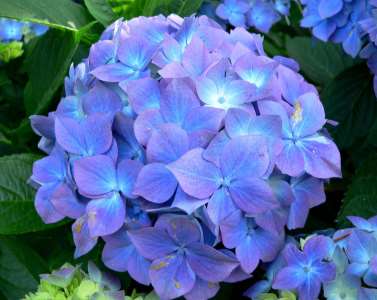
Image:- Hydrangea Flower
- Hydrangea is a shrub or climbing plant with rounded or flattened flowering heads of small florets.
- It is local to Asia and America.
- They come in various shape such as ranging from the big, rounded flower clusters of the Mophead Hydrangeas, to the delicate, flat, lacy flowers of the Lacecap Hydrangeas, or to the pointy, conical flowerheads of the Oakleaf Hydrangeas.
- Hydrangeas grow best in porous, moist soil with a fair amount of compost.
- They can even grow well in some shade because they don’t depend vigorously on daylight.
- If you are planting hydrangeas in clusters than you required some space between 3-5 feet.
- Hydrangea name is come from the Greek “Hydros” it means water and angos means “Jar”.
- Their scientific named is “Hydrangea”.
- It smell like rich honey-vanilla.
- Hydrangeas root and stem are used to make medicine.
- Hydrangea are also used by the people for bladder infections, prostate infections, enlarged prostate, kidney stones, and other conditions.
- But there is no scientific proof to support these usage.
- The use of large amount hydrangea might be unsafe.
46. Jasmine
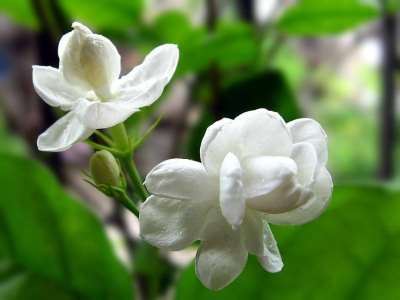
Image:- Jasmine Flower
- Jasmine is an old world shrub or climbing plant that is popular as an ornamental and bears fragrant white.
- Its borne in cymose bunches with a minimum of three flowers.
- They are made up of four to nine petals, two locules and one to four ovules.
- It consists of two stamens with very short filaments.
- It originates from the Himalayas and the moderate regions of China.
- Jasmine bascially found in West Asia, the Indian subcontinent, Northeast Africa, East Africa and Iberian peninsula.
- They blossoms in the range of yellow, pink, or pink-white.
- The scientific named of Jasmine is “Jasminum”.
- Jasmine needs well-drained but moist, moderately fertile sandy loamy soil for their growth and flower bloom.
- Jasmine has a rich, fruity, sweet, and sensual floral scent.
- It also has a faintly animalistic edge and has a strong, musky scent.
- The scent of jasmine is universally attractive due to its combination of feminine sweetness and masculine wildness.
- Jasmine is breathed to improve mood, reduce stress and reduce food cravings.
- Jasmine is a flavouring agent used in beverages, confectionery, baked products, puddings, frozen dairy desserts, and gelatins.
- In manufacturing, jasmine is used to provide aroma to creams, lotions and fragrances.
47. Lilac
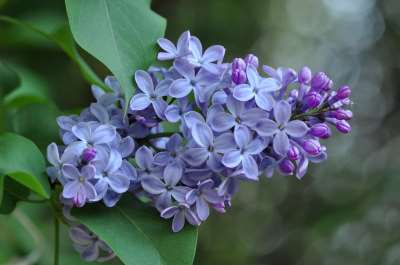
Image:- Lilac Flower
- A lilac is a little tree that has sweet-smelling purple, pink or white flowers in large cone shaped group.
- Their flower have a tubular base upto the corolla 6-10 mm long with an open four-lobed appox 5-8 mm across.
- Its palnt grow to 6-7 m high with a large deciduous shrub or multistemmed.
- The leaves are simple upto 4-12 cm and 3-8 cm broad with color in light green to glaucous.
- “Syringa” is the scientific named of lilac.
- A lilac can give color and fragrance from April through June.
- It needs full sun and well-drained soil for their best growth.
- Lilac smell is delicate, tender that belongs to the fresh, spring like floral perfumery.
- The common lilac is 1st appeared in eastern Europe.
- Lilac is used in the medicinal purpose to treat fever, reduce stress and anxiety and relieve digestive conditions.
- Lilac is simple enjoy as an infusion of the flowers for a lilac sugar.
48. Poinsettia
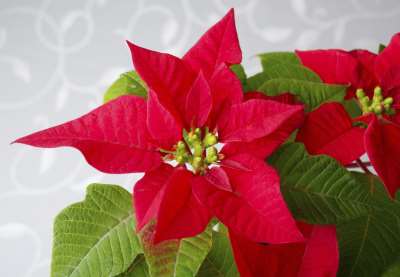
Image:- Poinsettia Flower
- Poinsettia is a small Mexcian shrub that has large showy scarlet bracts with small yellow flowers in the center.
- The tiny yellow flowers in the center is known as cyathia.
- It’s colorful bracts attract insects to the flowers and will drop after pollination.
- It was 1st described by the Europeans in 1834.
- It’s scientific named is Euphorbia pulcherrima.
- It is popularly used in Christmas floral displays and is especially well-known for its red and green foliage.
- In moist soil with temperatures between 65 and 70 degrees F, Poinsettias grow well.
- Poinsettias are not harmful but yet the sap might cause dermatitis.
- They come in a variety of colours, including bright red, pink, and creamy white.
- Some cultivars have bracts with patterns in red, pink, green, white, and even bright orange.
- Poinsettia Flower has olfactive profile that is a pine like terpenic scent and frequently with a mushroom.
49.Queen Anne’s Lace
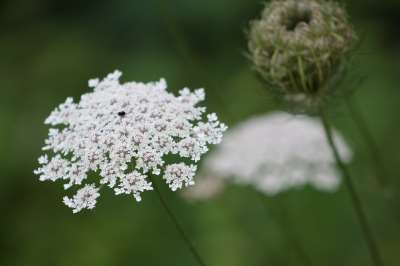
Image:- Queen Anne’s lace
- Queen Anne’s lace is a biennial wildflower with branching stems that has identified by its flat-topped cluster of small, white flowers and fern-like leaves.
- They are arranged in flat-topped compound which is similary to umbrella-shaped clusters that is measured in approximately 7.5-12.5 cm in width.
- It’s central flower is usually purple.
- This plant is also named as Wild Carrot, Devil’s Plague, Bee’s Nest-plant, and Bird’s-Nest.
- Their scientific named is ” Daucus carota “.
- It’s edible tap root color is white that smells like a carrot as well as edible leaves also have a flavor and fragrance which is like carrot.
- Queen Anne’s lace are often used by those people with kidney and bladder infections, cystitis and gout to flush toxins from the body.
- It’s grow best in loamy and nutrient-poor soil yet it can likewise deal with powdery soil, sandy soil and surprisingly, a smidgen of earth soil given that it depletes well.
50. Rhododendron
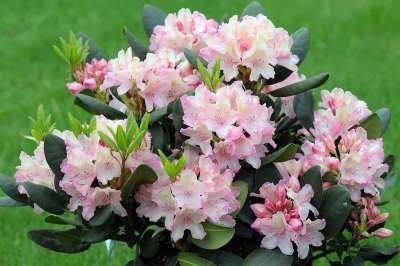
Image:- Rhododendron Flower
- Rhododendron is a large bell-shaped flower with large evergreen leaves that belongs to the heather family.
- It grow in clusters in a wide variety of colors like red, purple, white, orange, yellow and pink.
- They have no final size and can grow almost indefinitely.
- Their height may reaches 16 inch in 10 years to giant tree like specimens as tall as 20 ft. or more.
- It needs moist but well-drained, acid soil for their better development between pH 5.0 to 6.0 which is rich in organic matter.
- Rhododendron blossom best in the months of May and June.
- Their Scientific named is Rhododendron.
- In India, it is known as Burans.
- In traditional Asian, North American, and European medicine, rhododendrons have primarily been used to treat pain, inflammation, skin conditions, the common cold, and gastrointestinal illnesses.
Uses of Flower
- A flower is used to greeting the people.
- A flower is used for making herbal medicines.
- It is also used for making cosmetics products like lipsticks, creams, toners, soaps etc.
- It is used to hair decor by the women.
- Flower is useful to improved your indoor air quality.
- It helps in the absorption of radiation.
- Jasmine, rose buds and chamomile are used for making all popular teas by the people.
- A flower is used for making herbal medicines.
- Flowers are used for prayers, funerals, and other similar occasions in various religions.
- Flowers are used in essentials oils that can be smelled through various diffusers or by being applied topically to the skin.
- In many cafes and bubble tea shops in Hong Kong, lavender and rose-flavored pastries and beverages are also very popular.
Functions of Flower
- The main function of a flower is to reproduce male and female gametes in the plants.
- It gives nectar to birds or bug.
- It attracts the birds or insects for help in fertilization.
- Flower also enhances the beauty of the plant.
Advantages of Flower
- Flower is used as a natural pain killer.
- It has anti-inflammatory properties.
- Their petals are used as heart-healthy.
- It had Anti-Diabetic properties.
- It has also antimicrobial properties.
- Its increase the immunity system.
- Flowers naturally spark conversation.
- Its bring colour to the room.
- Your sense of smell is favourably influenced by flowers.
- Certain moods are fostered by flowers.
- Flowers give your room a feeling of purpose.

